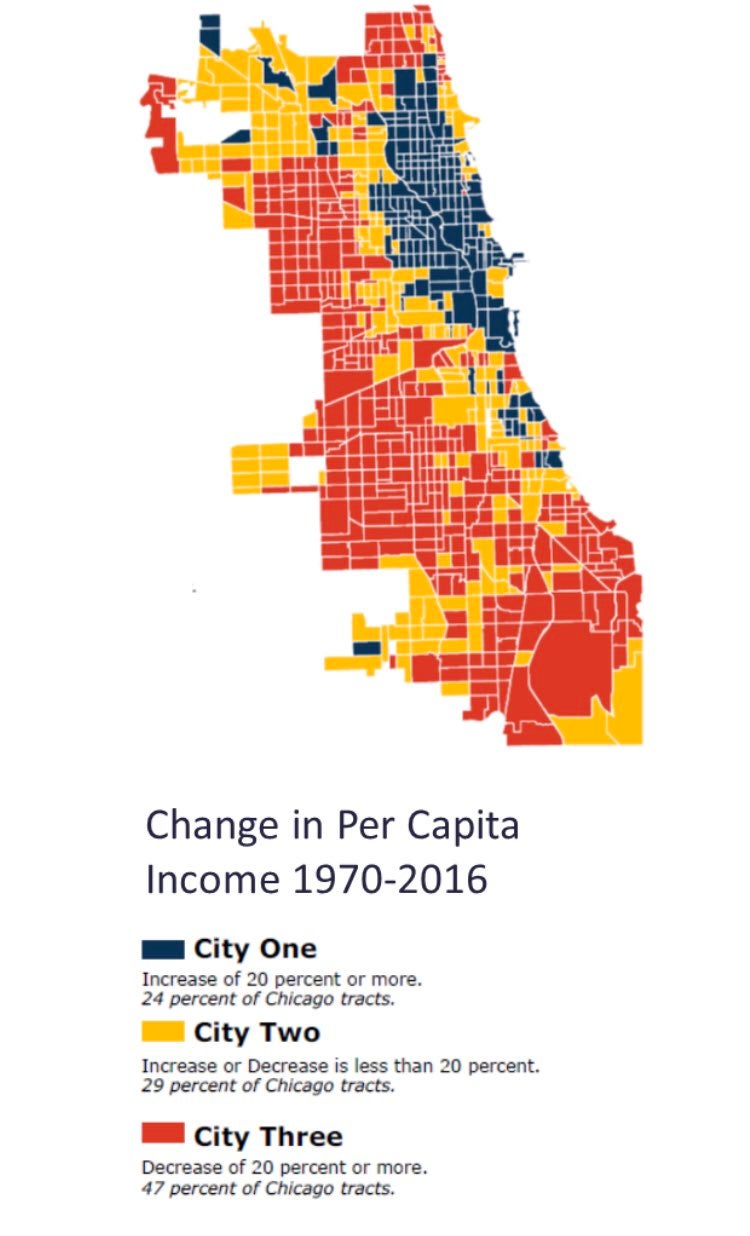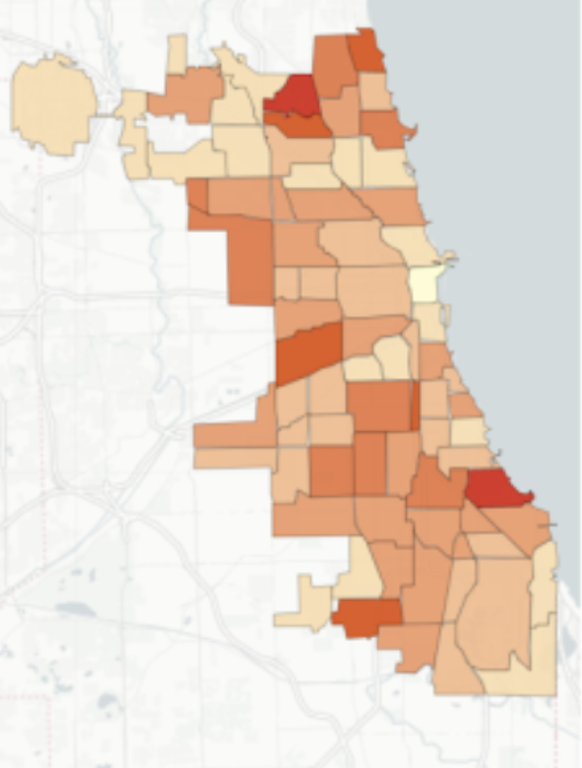Navigating a Pandemic in Chicago’s Three Cities
The Nathalie P. Voorhees Center Three Cities study analyzed change in income in the seven-county Chicago Metropolitan Region from 1970-2016, assessing each Census Tract’s average per capita income relative to the region at different points in time. As our study illustrated, Chicago has grown more segregated by income over time and continues to lose its middle class.
Three Cities Study Heading link

How does this segregation of income affect populations experiencing and navigating a pandemic?
Vulnerability to Disease. The UIC Urban Data Visualization Lab (UDVL) created a COVID -19 map that shows where populations most affected by the disease live relative to the location of health facilities. It is no surprise that many of these vulnerabilities fall within what our Three Cities study calls “City 3” – the communities where there has been a steady decrease in income over decades (20% or more). These areas tend to contain both a higher concentration of vulnerable populations including seniors, nursing home residents, homeless and lower access to health facilities.
Vulnerability to the Impact. A second UDVL map shows where populations most vulnerable to the economic impacts of the disease live, such as low-income residents, in relation to small businesses. While many small businesses in Chicago are clustered in City 1, areas with low poverty levels and that have seen income increase 20% or more since 1970, the map also shows small businesses in City 2 and City 3 where a large number of people have been infected by COVID-19. Many of these businesses that were likely struggling before the pandemic are now dealing with the impact of disease on residents and shelter-in-place orders aimed at reducing the spread of disease.
What do these maps say about the location of resources within our city? Heading link

What do these maps say about the location of resources within our city?
Our most vulnerable communities not only face poverty and income segregation but are now also the most vulnerable to a deadly virus. Investment from the city, as proposed in the Chicago Recovery Task Force report, can help change this if resources go to short term support for residents and businesses hardest hit. But investment is also needed to build the necessary infrastructure, such as healthcare facilities and small businesses, in order to more equitably distribute resources throughout our Three Cities.